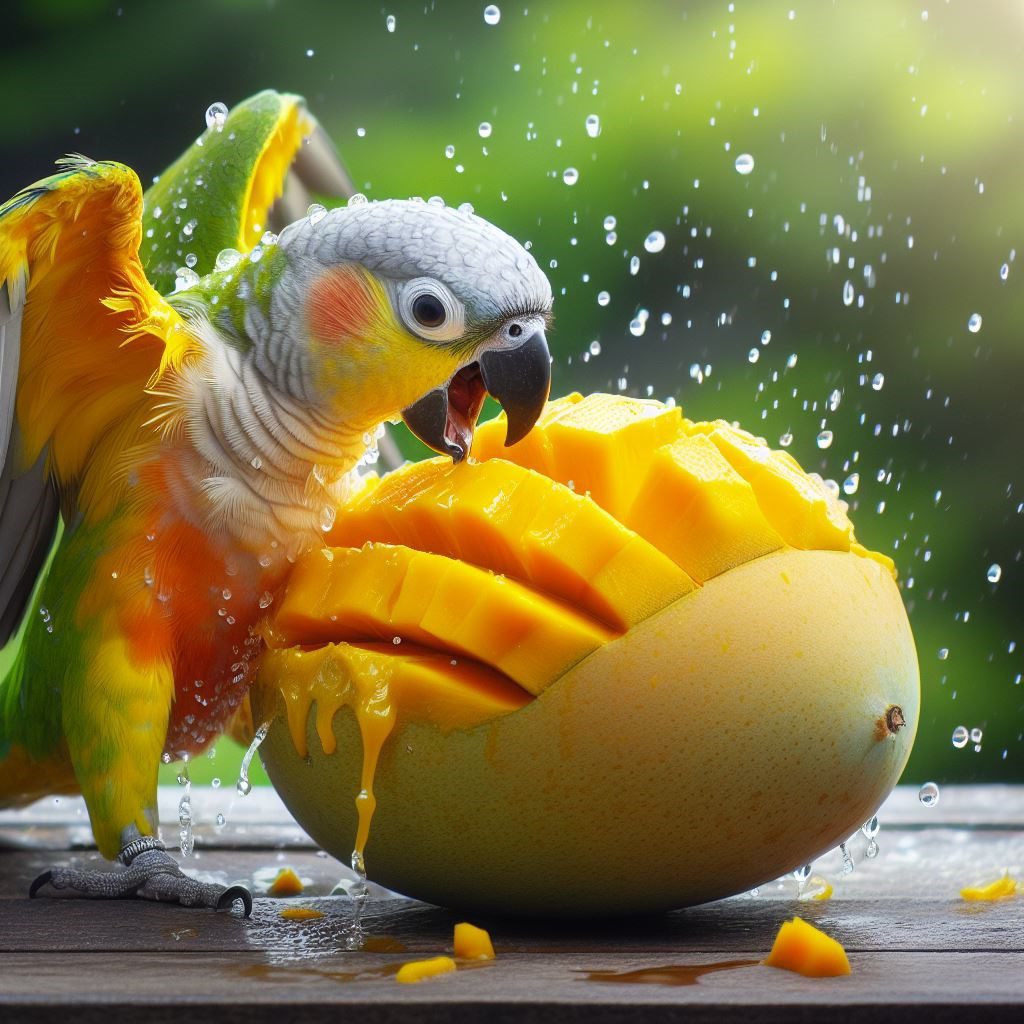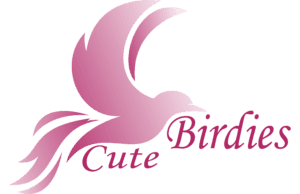We know as humans we should be adding more fruits and vegetables into our diet, although it’s easier said than done. When it comes to my parrot’s diet I almost treat him more important than my own, after all, they are like little children they depend on you to feed them, so it’s vital you feed them foods that are going to improve their quality of life. What about mangoes, are they safe for our parrots to eat? Let’s find out.

Can parrots eat mango? Yes, parrots can eat mango, it’s a safe and nutritious fruit that your feathered friend will love. Not only are mangoes safe for our parrots to consume but they actually provide numerous health benefits and contain important nutrients and vitamins like vitamin A, vitamin C, weight control, and an improved digestive system.
In this article, I’m going to further explain why mangoes are so good for parrots among other important things I feel like you should know so read on!
Mango Benefits For Parrots
We know mango is good for our Parrots, but just how good is it? Let’s take a closer look at the nutritional content.
One cup (165 grams) of fresh mango contains :
| Calories | 99 |
| Protein | 1.4g |
| Carbs | 24.7g |
| Fat | 0.6g |
| Sugar | 22.5g |
| Fiber | 2.6g |
Vitamin A
Vitamin A deficiency is fairly common among parrots but also easily preventable. The symptoms of a vitamin A deficiency are skin issues, damage to the respiratory tract, sneezing, poor appetite, and issues with their feathers. Birds need vitamin A because it provides many necessary functions like :
- Supports healthy eye function
- Helps in the growth and repair of body tissue
- Supports birds hearing
- Necessary for the functioning of the eyes, bones, skin, and mucus membranes.
Vitamin C
Peaches also contain vitamin C, an antioxidant that can prevent diseases like cancer or heart disease. It’s also a vital vitamin that parrots need as it provides many benefits:
- Boosting the immune system
- Blood pressure control
- Regulates and maintains a healthy blood sugar
- Helps with healing
Other foods that contain vitamin C your parrot can have are any kind of berry like strawberries or raspberries, broccoli, peppers, and citrus fruits.
Potassium
Potassium is a mineral found in peaches. It’s important for your parrot’s heart, kidneys, muscles, and nervous system. It also helps with :
- Blood pressure and cardiovascular health
- Bone and muscle maintenance
- Kidney health
If you’re looking for other sources of potassium then you can feed your parrot bananas, apricots or lentils are all great ways to give your bird that well-needed potassium and is safe for them to eat.
Improved Digestion
As there’s fiber in peaches this in turn will help your parrot’s digestive system. Fiber does this by increasing the size and weight of stools, leading to an easier passage through the digestive system leading to a lesser chance of constipation.
It also helps with the general health of your bird’s gut.
Weight Maintenance
Continuing on from the last section, peaches can also act as a weight maintainer for parrots. It does this because it contains fiber, and foods high in fiber are typically more filling. This leads to your parrot not being as hungry and decreasing the chances they overeat.
Can Parrots Eat Mango Skin?
Not only can parrots eat mango skin safely, but it’s encouraged that they do! Mango skin is extremely nutritious.
Mango skin is high in polyphenols, carotenoids, dietary fiber, vitamin C, vitamin E, and other plant chemicals, according to research.
The skin is also where the majority of the fiber in mango, is kept.
One study has also shown that mango skin contains higher antioxidant and anticancer properties than the flesh itself.
How You Should Feed Mango To Your Parrot
To prepare a mango for your parrot you’ll need to cut it and serve in smaller pieces.
Step 1. : On a chopping board, place the mango with the point facing down and the stem end facing up.
Step 2: To make one ‘cheek,’ use your knife to cut through the flesh, about 1cm (or half a finger width) out from the fruit’s center.
Step 3: Repeat for the other side of the mango.
Step 4: To remove as much flesh as possible, cut the sides of the center section on the diagonal, following the lines of the stone.
Step 5: To make it easier to remove the skin, cut each cheek in half, then quarters.
Step 6: Insert the knife into the flesh slightly above the skin’s surface, keeping the knife flat parallel to the cutting board. To remove it, gently follow the skin’s line.
Step 7: To make smaller pieces, slice the mango into tiny wedges or dice it.
You can keep the skin and feed it to your feathered friend if desired.
What Other Foods Can Your Parrot Eat?
You know mango is safe for your parrot to eat but if you’re like me then you’re always looking for new foods to improve your parrot’s diet to create some variety and and include vital things that aren’t already in your bird’s diet.
So what other foods can your Parrot eat?
- Fruit & Vegetables
Foods like asparagus, broccoli, carrots, peppers, bananas, blueberries and pineapples are all fine and encouraged for your Parrot to eat.
- Nuts
Things like almonds, Brazil nuts, cashews, hazelnuts, pistachios, and walnuts can be fed to your parrot. Just be wary of the fat content in some of them so they may need to be treated as a snack for your Parrot. We don’t want them getting fat!
Mango For Parrots – Final Thoughts
You now know that mango is an excellent nutritious snack for your parrot to enjoy. It’s completely safe for them to eat however the stone in the center isn’t so make sure that’s removed before serving it. As mango is a fruit it shouldn’t be a staple in your parrot’s diet as fruits and vegetables should only make up around 15-20% of your bird’s diet.
I hope you have found this guide useful and your parrot enjoys a delicious new addition to their diet!






